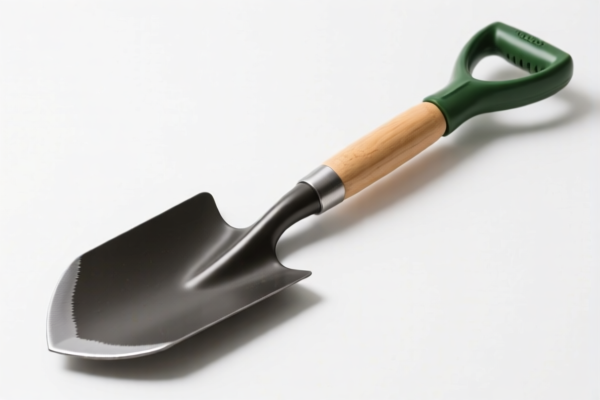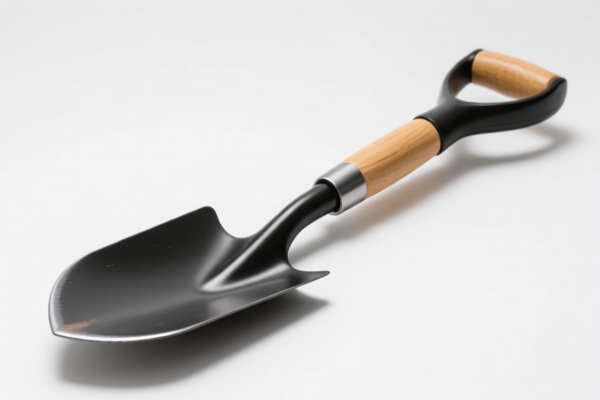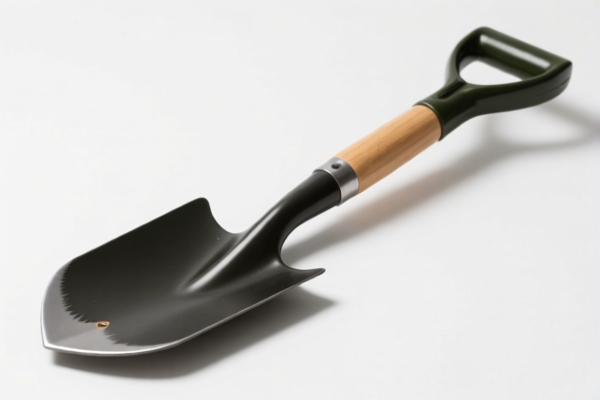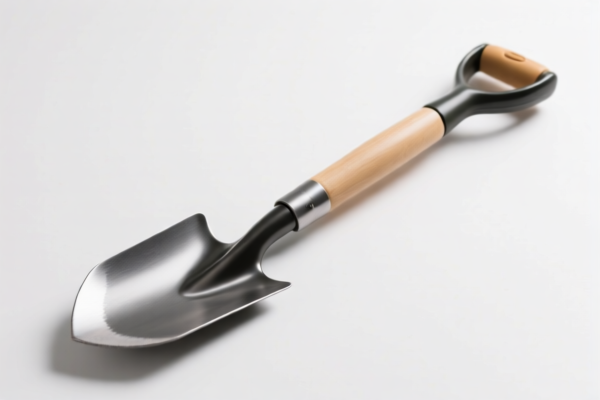| HS Code | Official Doc | Tariff Rate | Origin | Destination | Effective Date |
|---|---|---|---|---|---|
| 8201100000 | Doc | 55.0% | CN | US | 2025-05-12 |
| 7115906000 | Doc | 59.0% | CN | US | 2025-05-12 |
| 7218100000 | Doc | 30.0% | CN | US | 2025-05-12 |
| 7218990090 | Doc | 30.0% | CN | US | 2025-05-12 |
| 7222300001 | Doc | 30.0% | CN | US | 2025-05-12 |
| 7222300022 | Doc | 30.0% | CN | US | 2025-05-12 |
| 7326908688 | Doc | 82.9% | CN | US | 2025-05-12 |
| 7326908688 | Doc | 82.9% | CN | US | 2025-05-12 |
| 7323930060 | Doc | 57.0% | CN | US | 2025-05-12 |
| 7323930045 | Doc | 57.0% | CN | US | 2025-05-12 |




Stainless Steel Shovel
A stainless steel shovel is a digging and lifting tool featuring a blade and handle constructed primarily from stainless steel. It is commonly employed in gardening, landscaping, construction, and snow removal.
Material
The key component is stainless steel, an alloy of iron, chromium, and other elements. Chromium content (typically 10.5% or more) provides corrosion resistance, preventing rust and staining. Different grades of stainless steel are utilized, impacting strength and durability; 304 stainless steel is common for general use, while 410 or 420 stainless steel offers increased hardness and wear resistance. Handles can be stainless steel, wood, fiberglass, or polypropylene.
Purpose
The primary purpose of a stainless steel shovel is to move material – soil, sand, gravel, snow, mulch, or other loose substances. Its design facilitates digging, scooping, lifting, and transporting these materials. The corrosion resistance makes it suitable for environments where moisture and potential chemical exposure are present.
Function
The shovel functions through the application of leverage. The blade is shaped to penetrate and lift material, while the handle provides the necessary force and control. The curved shape of the blade helps retain the material being lifted. The point of the blade is designed for initial penetration of the ground or material.
Usage Scenarios
- Gardening: Planting, transplanting, weeding, and amending soil.
- Landscaping: Moving soil, gravel, and mulch; edging; and preparing garden beds.
- Construction: Digging trenches, moving materials, and site preparation.
- Snow Removal: Clearing walkways, driveways, and patios.
- Agriculture: Moving feed, fertilizer, and other agricultural materials.
- Beach Cleaning: Removing sand and debris.
Common Types
- Round Point Shovel: Versatile, suitable for digging, edging, and general purpose use. The rounded point is effective for breaking up hard soil.
- Square Point Shovel: Designed for moving materials, particularly loose substances like sand, gravel, and mulch. The flat blade provides a larger scooping surface.
- Drain Shovel: Narrow blade, ideal for digging narrow trenches for drainage or irrigation.
- Trenching Shovel: Similar to a drain shovel, but often with a more pointed blade for deeper trenching.
- Snow Shovel: Typically made with a wider, curved blade made of plastic or lightweight metal, designed for efficient snow removal. While some are stainless steel, they are more commonly constructed from other materials.
- Folding Shovel: Compact, portable design, often used for camping, backpacking, or emergency preparedness. Frequently made with stainless steel blades for durability.
Advantages of Stainless Steel
- Corrosion Resistance: Resists rust and staining, extending the tool's lifespan.
- Durability: Strong and capable of withstanding heavy use.
- Ease of Cleaning: Smooth surface makes it easy to remove dirt and debris.
- Hygienic: Less prone to harboring bacteria or mold.
Disadvantages of Stainless Steel
- Cost: Generally more expensive than carbon steel shovels.
- Weight: Can be heavier than shovels made with other materials.
- Flexibility: Can be less flexible than carbon steel, potentially making it more prone to bending under extreme stress.
Stainless steel shovels fall under the category of hand tools used in agriculture, horticulture, or forestry.
Here are the relevant HS codes based on the provided reference material:
-
8201100000: This HS code covers spades and shovels, and parts thereof, made of hand tools and base metal parts. Specifically, it includes spades and shovels used in agriculture, horticulture, or forestry.
- 82: Chapter 82 – Plastic and articles thereof; rubber and articles thereof. (However, this HS code specifically refers to handtools of this kind.)
- 01: Heading 01 – Hand tools, spades, shovels, mattocks, picks, hoes, forks and rakes; axes, bill hooks and similar hewing tools.
- 100000: Subheading 01 – Spades and shovels, and parts thereof.
- Tax Details: Basic tariff: 0.0%, Additional tariff: 25.0%, Tariff after April 2, 2025: 30.0%, Total tariff: 55.0%.
-
7218100000: This HS code covers stainless steel in ingots or other primary forms; semi-finished products of stainless steel, specifically ingots and other primary forms.
- 72: Chapter 72 – Iron and steel.
- 18: Heading 18 – Stainless steel in ingots or other primary forms; semi-finished products of stainless steel.
- 100000: Subheading 10 – Ingots and other primary forms.
- Tax Details: Basic tariff: 0.0%, Additional tariff: 0.0%, Tariff after April 2, 2025: 30.0%, Total tariff: 30.0%.
-
7218990090: This HS code covers stainless steel in ingots or other primary forms; semi-finished products of stainless steel, specifically other forms.
- 72: Chapter 72 – Iron and steel.
- 18: Heading 18 – Stainless steel in ingots or other primary forms; semi-finished products of stainless steel.
- 990090: Subheading 99 – Other.
- Tax Details: Basic tariff: 0.0%, Additional tariff: 0.0%, Tariff after April 2, 2025: 30.0%, Total tariff: 30.0%.
It is important to note that the total tariff for HS code 8201100000 is 55.0% and will increase to 60.0% after April 2, 2025. The total tariff for HS codes 7218100000 and 7218990090 is 30.0% and will increase to 30.0% after April 2, 2025.
Customer Reviews
No reviews yet.